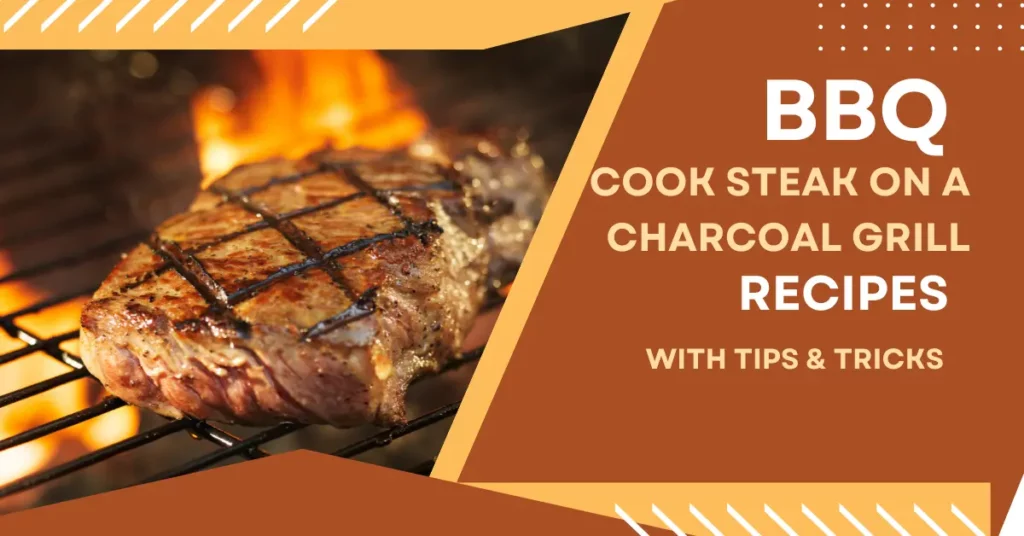This post may contain affiliate links. If you use these links to buy something we may earn a small commission. Thanks.
There’s something undeniably satisfying about the aroma of steak sizzling on a grill. Whether you’re a backyard BBQ enthusiast or just dipping your toes into the world of outdoor cooking, knowing how long to cook steak on a grill at 350°F is crucial for achieving that perfect bite. Grilling steak isn’t just about throwing meat on the grates it’s a fine balance of temperature, time, and technique.
This guide will walk you through everything you need to know about grilling steak at 350°F from estimated cook times to expert tips so you can serve up juicy, flavorful steaks every single time.
Why Grill Steak at 350°F?
Grilling steak at 350°F offers a sweet spot between getting a good sear and allowing the inside to cook evenly. This medium heat temperature is perfect for those who want a balanced crust on the outside without overcooking the interior.
At this temperature:
- You reduce the risk of burning the exterior before the interior is done.
- It allows better control for reaching the desired level of doneness.
- It’s ideal for thicker cuts that need a slightly slower cook time to reach the perfect internal temperature.
Unlike high-heat searing, 350°F allows the steak to cook more gently, helping retain juices and tenderness.

Factors That Affect Cooking Time
Before diving into exact minutes, it’s essential to understand that several factors influence how long your steak should stay on the grill.
1. Type of Steak
Different steak cuts have different fat content, marbling, and tenderness, which affects cook time.
- Ribeye: Rich in fat, takes a bit longer to render.
- Sirloin: Leaner and quicker to cook.
- T-Bone: Two cuts in one—requires more precision.
- Filet Mignon: Thicker and tender, needs even heat.
2. Thickness of the Steak
A thicker steak takes longer to cook. A 2-inch thick ribeye will need significantly more time than a 1-inch sirloin.
3. Bone-In vs. Boneless
Bone-in steaks take slightly longer to cook because the bone insulates the meat.
4. Grill Type
Gas grills maintain consistent temperatures better than charcoal grills, which may fluctuate.
5. Initial Steak Temperature
If you place a steak straight from the fridge onto the grill, expect longer cooking times than a steak that’s rested at room temperature for 30 minutes.
Estimated Cooking Times at 350°F by Doneness
Use the following table as a general guide for cooking steak at 350°F. These times are per side, depending on your preferred level of doneness:
| Doneness | Internal Temp | 1-Inch Steak | 1.5-Inch Steak | 2-Inch Steak |
|---|---|---|---|---|
| Rare | 120–125°F | 3–4 min/side | 4–5 min/side | 5–6 min/side |
| Medium-Rare | 130–135°F | 4–5 min/side | 5–6 min/side | 6–7 min/side |
| Medium | 140–145°F | 5–6 min/side | 6–7 min/side | 7–8 min/side |
| Medium-Well | 150–155°F | 6–7 min/side | 7–8 min/side | 8–9 min/side |
| Well-Done | 160°F+ | 7–8 min/side | 8–9 min/side | 9–10 min/side |
Tip: Always use a meat thermometer to get the most accurate results instead of relying solely on time.
How to Check for Doneness
There are several ways to ensure your steak is cooked just the way you like it:
1. Meat Thermometer (Recommended)
Insert a digital thermometer into the thickest part of the steak without touching the bone or grill. This method gives you an instant, accurate reading.
2. Touch Test
Using your hand as a reference:
- Rare: Feels like the fleshy part below your thumb when relaxed.
- Medium-Rare: Press your index finger and thumb together.
- Medium: Touch your middle finger to your thumb.
- Well-Done: Ring or pinky finger to thumb.
3. Visual Indicators
- Rare: Bright red center
- Medium-Rare: Warm red center
- Medium: Pink center
- Well-Done: Gray-brown throughout with minimal pink
Tips for Perfectly Grilled Steak at 350°F
Grilling the perfect steak is part science, part art. Here are some tried-and-true tips:
1. Preheat Your Grill
Allow your grill to preheat for at least 10–15 minutes. A properly heated grill ensures even cooking and better sear marks.
2. Use Two-Zone Grilling (Optional)
Set up a direct heat zone (for searing) and an indirect heat zone (for finishing thicker steaks slowly). Start with a sear and then move to indirect heat to finish cooking.
3. Don’t Press the Steak
Resist the urge to press down with your spatula. This squeezes out juices, leading to a dry steak.
4. Let the Steak Rest
After grilling, let your steak rest for 5–10 minutes before cutting. This allows the juices to redistribute throughout the meat, ensuring maximum tenderness.
Common Mistakes to Avoid
Even experienced grillers can make mistakes. Avoid these pitfalls for a flawless steak experience:
- Skipping the Thermometer: Guesswork often leads to undercooked or overcooked steak.
- Grilling Cold Steak: Always let steak reach room temperature before grilling.
- Over-seasoning: While marinades are great, overdoing seasoning can overpower the natural flavor.
- Cutting Too Soon: Cutting right after grilling drains the juices.
Best Seasonings and Marinades for Grilling Steak
While a simple salt and pepper combo is timeless, you can elevate your flavor with a variety of rubs and marinades.
Classic Seasonings
- Sea salt
- Cracked black pepper
- Garlic powder
- Onion powder
- Smoked paprika
- Chili flakes
Marinade Ideas
- Garlic Herb Marinade: Olive oil, minced garlic, rosemary, lemon juice
- Soy-Ginger Marinade: Soy sauce, honey, fresh ginger, sesame oil
- Balsamic Glaze: Balsamic vinegar, brown sugar, Dijon mustard
Tip: Marinate your steak for at least 30 minutes or up to 24 hours, depending on the cut and flavor intensity desired.
Frequently Asked Questions (FAQs)
Q1: Can you cook a steak well at 350°F?
Yes! While higher temperatures are great for searing, 350°F provides excellent control for even cooking, especially for thicker cuts.
Q2: Is 350°F hot enough for a good sear?
It’s sufficient for a light sear, especially if your grill grates are hot. For a crustier sear, start at high heat and finish at 350°F.
Q3: Should I cover the grill when cooking steak?
It depends. Covering helps retain heat and cook thicker steaks more evenly. For thinner steaks, grilling uncovered is fine.
Q4: How do I keep steak juicy on the grill?
Avoid overcooking, don’t press down on the meat, and let it rest post-grilling to lock in moisture.
Conclusion
Cooking steak on a grill at 350°F is an excellent method for those who want flavor, tenderness, and control. Whether you’re aiming for a juicy medium-rare ribeye or a well-done sirloin, knowing your cook times, using a thermometer, and following proper grilling techniques will ensure success.
The beauty of grilling is in its versatility experiment with different cuts, marinades, and cooking styles until you discover your personal favorite. So fire up that grill, grab your tongs, and get ready to impress your guests with perfectly grilled steaks every time.
